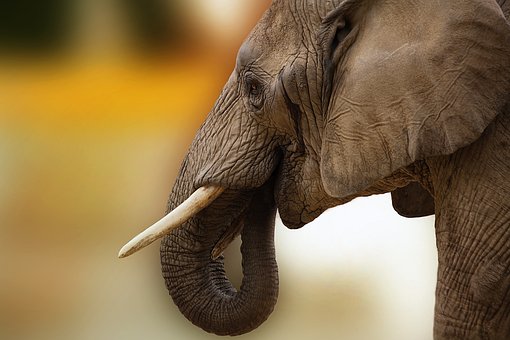When the Convention on International Trade in Endangered Species of Wild Fauna and Flora, or CITES, allowed a one-off chance for China to bid on a 108-ton stockpile of ivory amassed from natural African elephant deaths and culling in 2008, many conservationists around the world assumed Chinese public sentiment toward ivory would become more favorable. But new YSE-led research published in Conservation Biology, which employs machine learning techniques to analyze public opinion, reveals that the exact opposite happened.
“After CITES authorized the sale of ivory, our analysis shows that the macro-public opinion in China became more negative toward ivory,” says Yufang Gao ’14 MESc, a PhD student in conservation science and environmental anthropology. “Chinese mass media coverage of ivory became more framed as anti-ivory, with news stories more focused on ivory smuggling and the government’s efforts to tightly control the ivory trade.”
The International Union for the Conservation of Nature has listed the African forest elephant as critically endangered, the savanna elephant as threatened, and the Asian elephant as endangered. Where once there were 10 million wild elephants in Africa, there are now only about 400,000 left on the continent. The Asian elephant population has declined 50% in the last three generations to about 50,000 and they are now at a high risk of extinction.
Gao has been dedicated to studying the elephant ivory trade for more than a decade. For this study, he teamed up with Yuntian Liu, a statistician at the Yale Center for Outcomes Research & Evaluation, and a team of international researchers to review Chinese media coverage of the elephant ivory between 2000 and 2021.
Using a machine learning technique known as latent Dirichlet allocation topic modeling, the researchers studied how media stories framed ivory in 6,394 pieces of coverage, looking for evidence of how wildlife policies impacted public opinion in China.
“LDA topic modeling [helps us identify and define] recurring topics. In this case, topics refer to collections of words that commonly appeared together throughout news stories on ivory, such as smuggling, customs, seized, Africa, endangered, and animal,’” Liu says.
The team was particularly interested in the impact of the 2008 decision by CITES —a 173-nation coalition that monitors international plant and animal trade — allowing the sale of African ivory stockpiles to China and a 2016 ban on domestic ivory trade announced by the Chinese government (a move by China to deter elephant poaching in Africa for illegal ivory trade).
Gao and Liu looked for clues on how these policies influenced Chinese public opinion on ivory arts and culture, elephant conservation, and ivory-related crimes. Their discovery that the CITES-approved sale of ivory negatively influenced public opinion on ivory was not the only surprising finding.
Many conservationists hypothesized that the 2016 domestic ivory ban would lead to more negative public opinions in China about ivory. But after the ban, media framing shows that macro-public opinion throughout China became more positive about elephant ivory.
Gao says the ban may have drawn more attention to the perceived value of ivory in art and culture, making ivory seem more desirable.
The research is important because it underscores the need for conservationists to take a more nuanced approach to understanding the relationship between mass media reports, policies, and public opinion, Gao notes.
“By monitoring mass media framing of wildlife and conservation issues, we might be able to sooner identify emerging problems or threats toward wildlife or the environment,” he says.
He recommends that conservation organizations work more closely with the media to share information and elevate the importance of wildlife conservation in mainstream public dialogue.
“Conservation is a social process that involves many different stakeholders, including the media industry, governments, general public, researchers, and more,” he says. “Topic modeling is a powerful tool for uncovering shifts in media framing, dynamics of the interplay between different perspectives, and gauging how policies are actually changing public opinions.”


